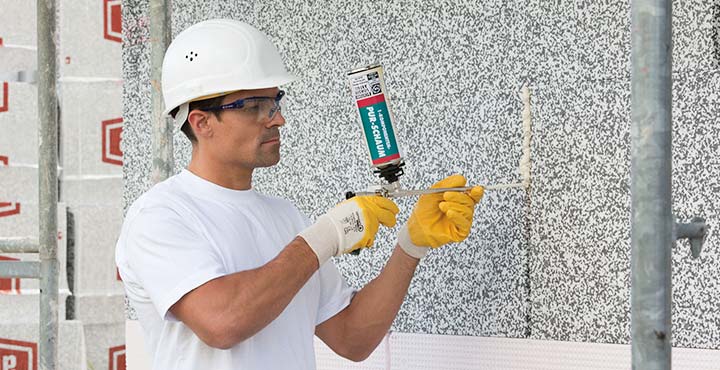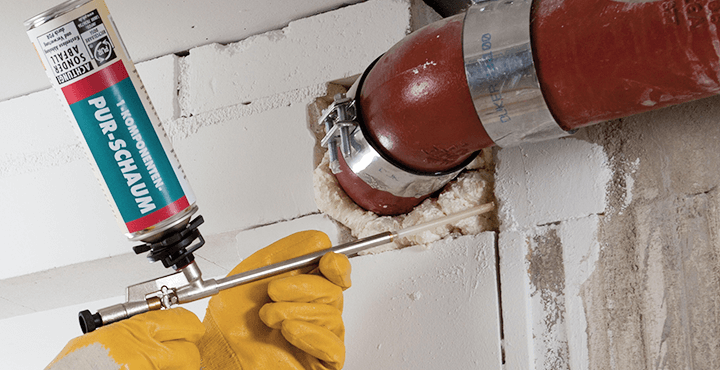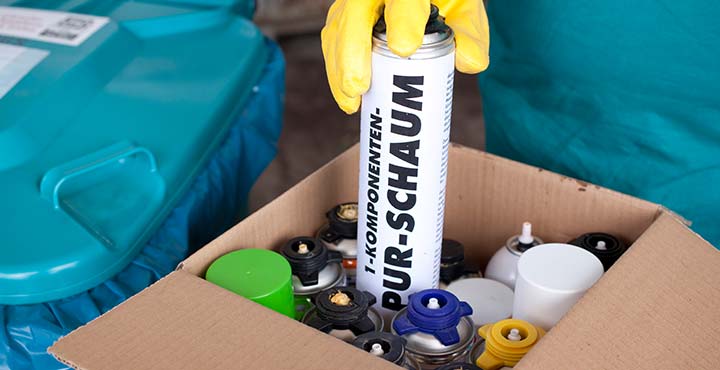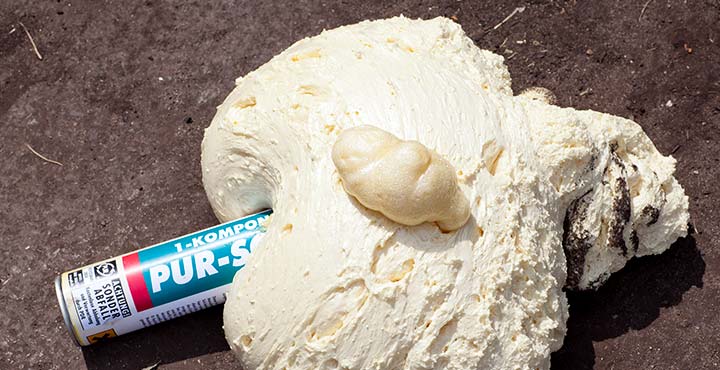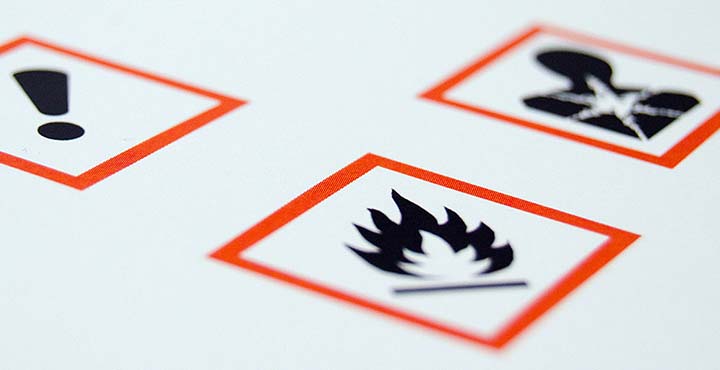
Special application areas
Is there a pure white PU foam for decorative projects?
Is PU foam suitable for insulating caravans/motorhomes?
Where can I find PU foam that works at temperatures of - 25°C?
What are fire protection foams?
Can well foam be used under water?
Is PU foam suitable for filling openings in brick walls?
Can the joints in pumice walls be sealed with PU foam?
Can I fill moisture-sensitive areas of my boat with PU foam?
What do I do, if I can’t hold the PU foam can so that the valve is facing downwards, e.g. under a ceiling?
Is there a pure white PU foam for decorative projects?
Manufacturers supply PU foams in various colours. Among these foams, there are some that are white. However the colour of the decorative projects are not decisive in the long run because PU foam is not light fast. This means: it changes colour over time. If the hardening foam should have a different colour at a later date, paint the foam to protect it from the effect of light.
Is PU foam suitable for insulating caravans/motorhomes?
PU foam can be used in many places in the caravan, for instance as insulation and for affixing the shower tub. Due to the fact that a caravan on the road is exposed to many vibrations, a flexible PU foam should be selected that moves with the movements of the vehicle without cracking. The name of the foam usually indicates whether or not the foam is flexible. Usually, the product names contain a term that indicates the foam properties such as 'flexible', or 'elastic', otherwise simply ask the vendor or read the product data sheet. The flexibility of the foam is stated via the compression force (compression around 10 % of the layer thickness). The lower the value, the higher the flexibility.
However, it is not recommended applying PU foam to fill out hollow spaces in vehicle bodies. Moisture deposits in the wall structures are likely. If the hollow space above the moisture is sealed with PU foam, this will encourage corrosion.
Where can I find PU foam that works at temperatures of - 25°C?
The winter foams sold in Germany can usually be used up to -10°C. PU foams that work at lower temperatures are sold in other countries that have much longer and colder winters. You should ask the manufacturers. There is a list of leading manufacturers of PU foam by PDR.
What are fire protection foams?
Construction foams that were developed as low-flammable PU foams for filling and sealing joints are usually simply called fire protection foams.
They need to correspond to the requirements of DIN 4102 Fire Behaviour of Building Materials and Parts of Class B1. If there are any special fire protection requirements, for instance if fire resistance classes according to EN 13501-2 (EI) need to be reached, these special foams are used in combination with other fire-inhibiting materials.
For more information, please click here
Can well foam be used under water?
No. Well foam is not suitable for this. Well foam was developed to allow waterproof adhesion of concrete rings and well shafts. It can also be used when setting shaft rings, drain shafts and domestic sewage plants. This special construction foam is resistant to thinned chemicals and is also resistant to rotting (resistant to bacteria in the earth).
Is PU foam suitable for filling openings in brick walls?
Filling openings in brick walls with PU foam is one of the most common application fields for this material in the can.
Can the joints in pumice walls be sealed with PU foam?
In this case we do not recommend using a classic PU foam because pumice absorbs too much moisture and this could prevent the PU foam from hardening.
Can I fill moisture-sensitive areas of my boat with PU foam?
PU foam is not suitable for use under water, but it can withstand moisture, for instance splashwater.
What do I do, if I can’t hold the PU foam can so that the valve is facing downwards, e.g. under a ceiling?
Even cans held with the valve facing upwards can work, if a few simple details are observed.
Here are six tips:
- Use a PU foam can that is not yet opened.
- If possible, use fresh foam.
You can recognise this by shaking the can. The more fluid the content, the fresher the PU foam! - The PU foam can should be warm. This means the foam should be about 25 °C.
This makes the content more fluid and it can exit the can more easily! - Shake the can thoroughly before use, so that the content is mixed well.
This improves the quality of the exiting PU foam. - Open the valve fully.
- Use a small construction can if possible.
The smallest 1-component PU foams are supplied in 150 ml cans. The next largest can is approx. 300 ml in size. 400 and 500 ml are OK. The 750 - 850 ml foams are too large for this purpose.
Anyone who observes these tips will be able to work without problems. However, a little more residual content than usual will be left in the PU foam can.

